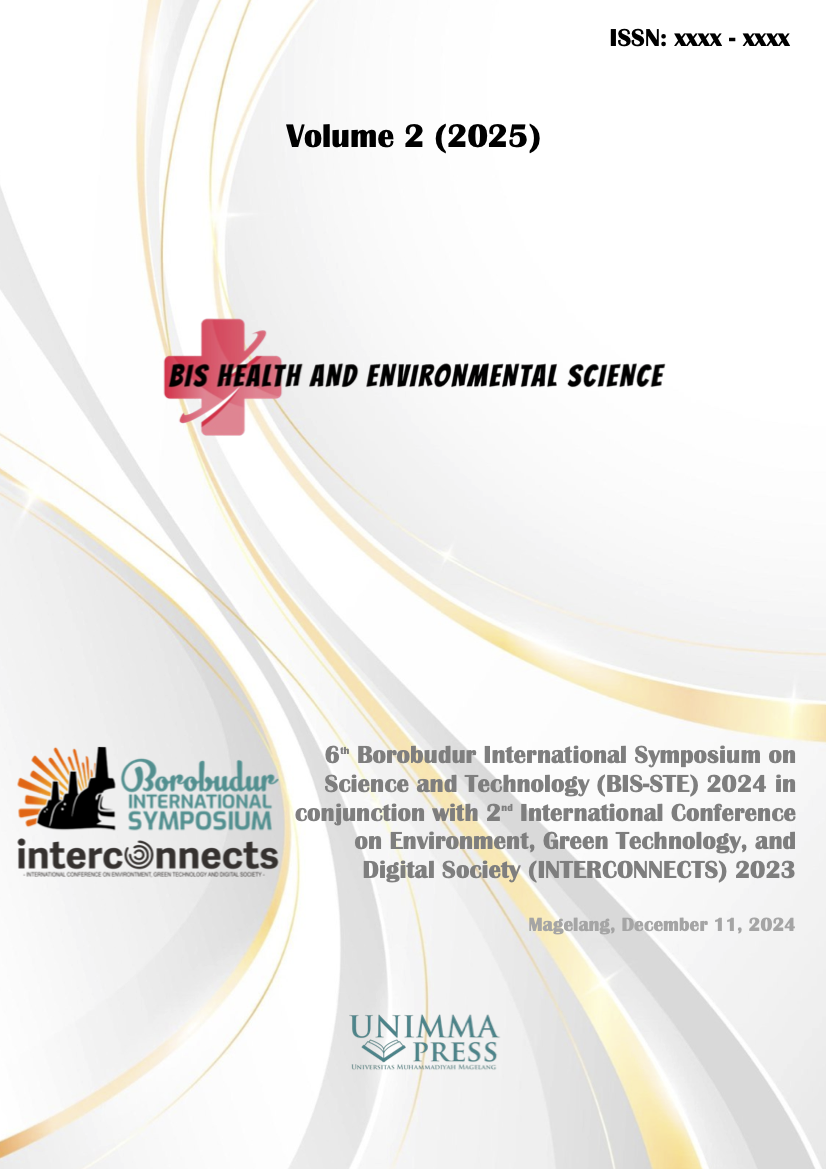Changing patterns of household access to clean water in Indonesia: A study for the 2018–2022 period
Keywords:
Access to clean water, Households, Regional trends, Indonesia, Social policyAbstract
Access to clean water is an important indicator of community welfare. Despite improvements in recent years, many households in Indonesia still face challenges in accessing clean water. This study aims to analyze the change in the percentage of households without access to clean water in Indonesia during the period 2018–2022. This study used longitudinal data from an annual survey that measured the proportion of households without access to clean water. The analysis was carried out descriptively to identify trends and variations between regions. Results show that there is a gradual decline in the percentage of households without access to clean water nationally, although there are fluctuations in some regions. Some provinces showed significant improvement, while others experienced stagnation or even improvement. These findings highlight the importance of area-based interventions to improve access to clean water, with priority given to areas that show slow improvement or regression. The results of this study can be the basis for more targeted policies in ensuring the equitable availability of clean water throughout Indonesia.
References
[1] M. I. Rusyda, T. Wahyuningsih, and ..., “Pengenalan Model Evaluasi Kondisi Jaringan Pipa Distribusi Air Bersih Pasca Gempa,” Sinergi: Jurnal …, vol. 1, 2020.
[2] D. Bachtiar, Z. Zulfan, and A. Munawir, “Strategi Peningkatan Sistem Pengelolaan Air Bersih di Aceh,” Jurnal Mekanova: Mekanikal, Inovasi dan Teknologi, vol. 8, no. 1, 2022, doi: 10.35308/jmkn.v8i1.5514.
[3] P. Utomo, A. M. Sukmawati, and A. A. Masagala, “Sosialisasi Peningkatan Akses Air Bersih Untuk Mendukung Program Sanitasi Sekolah Di Sd Negeri Lanteng Baru,” Selaparang: Jurnal Pengabdian Masyarakat Berkemajuan, vol. 6, no. 3, 2022, doi: 10.31764/jpmb.v6i3.10515.
[4] J. J. Messakh and D. A. Punuf, “Study on the accessibility of water sources to meet the water needs of rural communities in semi-arid regions of Indonesia,” in IOP Conference Series: Earth and Environmental Science, 2020. doi: 10.1088/1755-1315/426/1/012043.
[5] S. Irianti et al., “Investigating improved drinking water quality at the point of access: Evidence from four regions of Indonesia,” Journal of Water Sanitation and Hygiene for Development, vol. 14, no. 2, 2024, doi: 10.2166/washdev.2024.051.
[6] A. Fransiska, “Right to health on access to clean water in Indonesia,” International Journal of Research in Business and Social Science (2147- 4478), vol. 11, no. 6, 2022, doi: 10.20525/ijrbs.v11i6.1973.
[7] T. M. Basuki et al., “Water Pollution of Some Major Rivers in Indonesia: The Status, Institution, Regulation, and Recommendation for Its Mitigation,” 2024. doi: 10.15244/pjoes/178532.
[8] N. Astriani, B. Rubiati, Y. Adharani, S. S. Afifah, R. Salsabila, and R. Diffa, “The responsibility of the indonesian government to fulfill the rights to water during the COVID-19 pandemic: Some legal issues,” Environmental Policy and Law, vol. 51, no. 5, 2021, doi: 10.3233/EPL-201044.
[9] R. Talanipa, T. S. Putri, A. S. Sukri, and R. AR., “Evaluasi Kebutuhan Air Bersih Desa Sanggona Kabupaten Kolaka Timur,” STABILITA || Jurnal Ilmiah Teknik Sipil, vol. 9, no. 1, 2021, doi: 10.55679/jts.v9i1.16956.
[10] A. Asseggaf, D. S. Arum, and A. D. Lestari, “Analisis Kualitas Air Tanah Sumur Gali Di Desa Karangtengah, Kabupaten Bogor, Provinsi Jawa Barat,” Journal of Geoscience Engineering & Energy, pp. 123–130, Aug. 2023, doi: 10.25105/jogee.v4i2.18079.
[11] P. Pitriani, K. S. Kiki, A. Arwan, M. Ansar, and R. F. Suprianto, “Efektivitas Gravity Fed System dalam Penyediaan Air Bersih pada Wilayah Rawan Banjir Desa Rogo Kabupaten Sigi,” Jurnal Kesmas Untika Luwuk : Public Health Journal, vol. 14, no. 2, 2023, doi: 10.51888/phj.v14i2.209.
[12] V. Rofikoh, B. Zaman, and B. P. Samadikun, “Penyisihan BOD, Minyak Dan Lemak Dalam Air Limbah Domestik Dengan Menggunakan Karbon Aktif Dari Kulit Pisang,” Jurnal Kesehatan Lingkungan Indonesia, vol. 23, no. 1, 2024, doi: 10.14710/jkli.23.1.59-66.
[13] Dirjen Tanaman Pangan, “Laporan Tahunan Direktorat Jenderal Tanaman Pangan Tahun 2023,” Kementerian Pertanian Republik Indonesia, Mar. 2024, Accessed: May 11, 2024. [Online]. Available: https://tanamanpangan.pertanian.go.id/assets/front/uploads/document/LAPORAN%20TAHUNAN%202023.pdf
[14] R. Cahyadi, D. Kusumaningrum, and P. Prasetyoputra, “Self-supplied water in Indonesia: recent spatial and socio-demographic conditions and its future development,” in IOP Conference Series: Earth and Environmental Science, 2022. doi: 10.1088/1755-1315/1062/1/012038.
[15] I. R. D. Ari, W. Rukmi, and N. Elya, “Holistic Water Management at the Community Level, Case Study Jabung District, Malang Regency, Indonesia,” in IOP Conference Series: Earth and Environmental Science, 2020. doi: 10.1088/1755-1315/448/1/012062.
[16] N. Andriyanto, A. Suheri, and P. E. Soesanta, “Analysis of the sustainability status of community-based drinking water supply in Kapongan District, East Java,” Indonesian Journal of Applied Environmental Studies, vol. 4, no. 2, 2023, doi: 10.33751/injast.v4i2.8976.
[17] M. Karmilah and M. Y. Madrah, “Coping Strategies to Address Water Scarcity through Local Knowledge in Tidal Flood and Erosion-Prone Areas: A Case Study of Timbulsloko, Sayung Regency, Demak Municipality,” IOP Conf Ser Earth Environ Sci, vol. 1321, no. 1, p. 012005, Apr. 2024, doi: 10.1088/1755-1315/1321/1/012005.
Downloads
Published
Conference Proceedings Volume
Section
License

This work is licensed under a Creative Commons Attribution-NonCommercial 4.0 International License.

